Revaz Dogonadze was a notable Georgian scientist, Corresponding Member of the Georgian National Academy of Sciences (GNAS) (1982), Doctor of Physical & Mathematical Sciences (1966), Professor (1972), one of the founders of quantum electrochemistry,
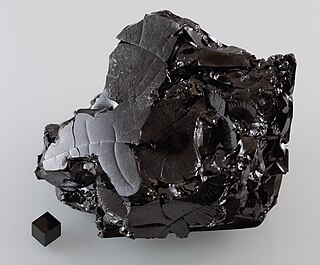
Glass-like carbon, often called glassy carbon or vitreous carbon, is a non-graphitizing, or nongraphitizable, carbon which combines glassy and ceramic properties with those of graphite. The most important properties are high thermal stability, high thermal conductivity, hardness (7 Mohs), low density, low electrical resistance, low friction, extreme resistance to chemical attack, and impermeability to gases and liquids. Glassy carbon is widely used as an electrode material in electrochemistry, for high-temperature crucibles, and as a component of some prosthetic devices. It can be fabricated in different shapes, sizes and sections.
Marcel Pourbaix was a Belgian chemist and pianist. He performed his most well known research at the University of Brussels, studying corrosion. His biggest achievement is the derivation of potential-pH, better known as “Pourbaix Diagrams”. Pourbaix Diagrams are thermodynamic charts constructed using the Nernst equation and visualize the relationship between possible phases of a system, bounded by lines representing the reactions that transport between them. They can be read much like a phase diagram.

Analytical Chemistry is a biweekly peer-reviewed scientific journal published since 1929 by the American Chemical Society. Articles address general principles of chemical measurement science and novel analytical methodologies. Topics commonly include chemical reactions and selectivity, chemometrics and data processing, electrochemistry, elemental and molecular characterization, imaging, instrumentation, mass spectrometry, microscale and nanoscale systems, -omics, sensing, separations, spectroscopy, and surface analysis. It is abstracted and indexed in Chemical Abstracts Service, CAB International, EBSCOhost, ProQuest, PubMed, Scopus, and the Science Citation Index Expanded. According to the Journal Citation Reports, it has a 2022 impact factor of 7.4. The editor-in-chief is Jonathan V. Sweedler.
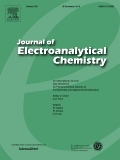
The Journal of Electroanalytical Chemistry is a peer-reviewed scientific journal on electroanalytical chemistry, published by Elsevier twice per month. It was originally established in 1959 under the current name, but was known as the Journal of Electroanalytical Chemistry and Interfacial Electrochemistry from 1967 to 1991. It is currently edited by X.-H. Xia. The journal is associated with the International Society of Electrochemistry. While the journal is now published exclusively in English, earlier volumes sometimes published articles in French and German.

The Journal of Applied Electrochemistry is a peer-reviewed scientific journal published by Springer Science+Business Media, which focuses on the technological applications of electrochemistry.

Zinc–cerium batteries are a type of redox flow battery first developed by Plurion Inc. (UK) during the 2000s. In this rechargeable battery, both negative zinc and positive cerium electrolytes are circulated though an electrochemical flow reactor during the operation and stored in two separated reservoirs. Negative and positive electrolyte compartments in the electrochemical reactor are separated by a cation-exchange membrane, usually Nafion (DuPont). The Ce(III)/Ce(IV) and Zn(II)/Zn redox reactions take place at the positive and negative electrodes, respectively. Since zinc is electroplated during charge at the negative electrode this system is classified as a hybrid flow battery. Unlike in zinc–bromine and zinc–chlorine redox flow batteries, no condensation device is needed to dissolve halogen gases. The reagents used in the zinc-cerium system are considerably less expensive than those used in the vanadium flow battery.
Silicon–air batteries are a new battery technology invented by a team led by Prof. Ein-Eli at the Grand Technion Energy Program at the Technion – Israel Institute of Technology.
Aspirin/paracetamol/caffeine is a combination drug for the treatment of pain, especially tension headache and migraine. It contains aspirin, a non-steroidal anti-inflammatory drug; paracetamol (acetaminophen), an analgesic; and caffeine, a stimulant.
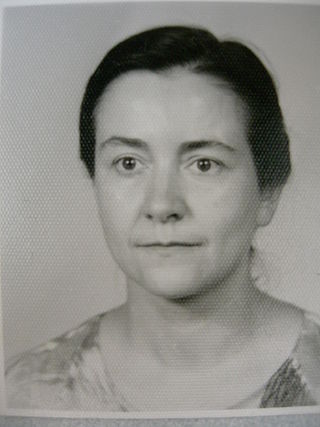
Milliana Kroumova Kaisheva was a Bulgarian physical chemist, internationally known for her work in electrochemistry and colloid chemistry.

ECS Electrochemistry Letters (EEL) is a monthly peer-reviewed scientific journal covering electrochemical science and technology. It was established in 2012 and is published by the Electrochemical Society. EEL ceased publication at the end of 2015. The editors-in-chief were Robert Savinell, Gerald S. Frankel, Thomas F. Fuller, Charles L. Hussey, Shelley D. Minteer, Rangachary Mukundan, Dennis G. Peters, John Weidner, and Martin Winter. According to the Journal Citation Reports, the journal has a 2014 impact factor of 1.789.

Electrochemical and Solid-State Letters (ESL) was a peer-reviewed scientific journal that began publication in 1998 as a joint publication of the Electrochemical Society and the IEEE Electron Devices Society. The final issue was published in 2012. The journal is now preserved as an archive, and has been replaced by ECS Electrochemistry Letters and ECS Solid State Letters.

'Jose H. Zagal Moya is a Chilean scientist educated at the University of Chile with postgraduate training in the United States of America with a Ph.D. degree from Case Western Reserve University, Cleveland Ohio and postdoctoral training at Brookhaven National Laboratory, Upton, New York. At present he is a Distinguished Professor, Department of Chemistry and Materials, Faculty of Chemistry and Biology, Universidad de Santiago de Chile (USACH) where he directs the Laboratory of Electrocatalysis since 1982. He got his Ph.D. in chemistry Case Western Reserve University, US (1978) and was postdoctoral fellow at Brookhaven National Laboratory, Upton, New York, in 1982. His main research efforts are focused on the fundamentals of electron transfer reactions that are relevant for energy conversion and sensors. He has contributed in the area of electrocatalysis, electrodes modified with metal macrocyclics, electrochemistry of biological molecules, the catalysis of the reduction of molecular oxygen and many other reactions of relevance, conductive polymers, electrochemical sensors and in pioneering work in the establishment of non-linear correlations between thermodynamic properties of molecular catalysts and their electrochemical reactivity. These contributions are essential in the development of non-precious metal catalysts for energy conversion devices and electrochemical sensors. [1][2][3] He also has contributed in the field of corrosion, conductive polymers and his well-known volcano correlations for the electrocatalytic properties of surface-confined molecular catalysts

Andrzej Wieckowski was an Emeritus Professor of Chemistry at the University of Illinois at Urbana–Champaign and the North American Editor of Electrochimica Acta. He is known for his spectroscopic investigations of electrocatalysis in fuel cells and co-inventing of the direct formic acid fuel cell (DFAFC). He authored more than 300 publications, has been cited over 13,000 times and has an h-index 60. He was appointed fellow of the Electrochemical Society in 2007 and fellow of the International Society of Electrochemistry in 2009. He was awarded the US Department of Energy Prize for outstanding Scientific Accomplishment in Materials Chemistry in 1992, the ISE Jacques Tacussel Prize in 1998, the ECS David. C. Graham Award in 2003, and the ISE Gold Medal in 2007.
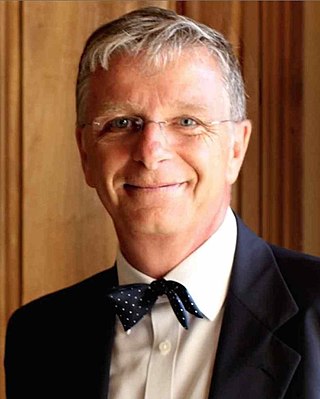
Hubert Girault (born 13 February 1957 in Saint-Maur-des-Fossés, France) is a Swiss chemist and is Emeritus Professor at the École Polytechnique Fédérale de Lausanne (1992-2022). He was the director of the Laboratoire d'Electrochimie Physique et Analytique, with expertise in electrochemistry at soft interfaces, Lab-on-a-Chip techniques, bio-analytical chemistry and mass-spectrometry, artificial water splitting, CO2 reduction, and redox flow batteries.

Doron Aurbach is an Israeli electrochemist, materials and surface scientist.
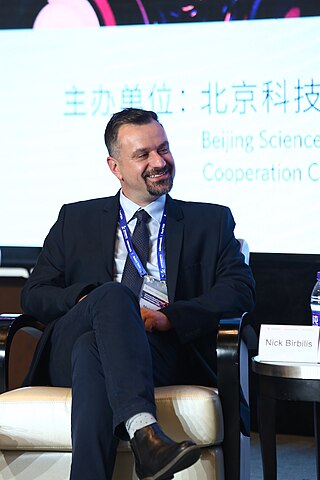
Nick Birbilis is an Australian engineer and academic. He is presently the Executive Dean of the Faculty of Science, Engineering, and Built Environment, at Deakin University. Birbilis was previously the Dean, and Deputy Dean of the College of Engineering and Computer Science at the Australian National University. He is of Greek-Australian background. Birbilis works in the field of materials science and engineering, having made contributions in the area of materials design, materials durability and materials characterisation. He is a Fellow of the Electrochemical Society (US), a Fellow of NACE (US), a fellow of Engineers Australia, a Fellow of the International Society of Electrochemistry, and a Fellow of ASM International (US).

Cao Chunan was a Chinese scientist who specialized in corrosion and electrochemistry. He was a member of the Jiusan Society.
Gerardine "Gerri" Botte is a Venezuelan-American chemist who is a professor and the Whitacre Department Chair in Chemical Engineering at Texas Tech University. Her research considers electrochemical engineering and the development of sustainable manufacturing processes. Botte is editor-in-chief of the Journal of Applied Electrochemistry and a Fellow of the Electrochemical Society.
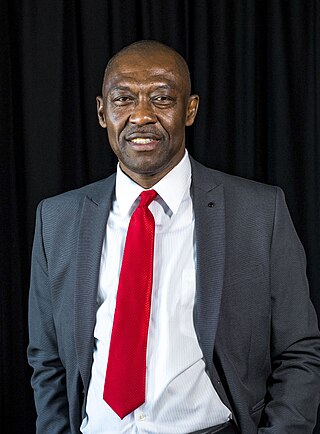
Kenneth Ikechukwu Ozoemena is a Nigerian physical chemist, materials scientist, and academic. He is a research professor at the University of the Witwatersrand (Wits) in Johannesburg where he Heads the South African SARChI Chair in Materials Electrochemistry and Energy Technologies (MEET), supported by the Department of Science and Innovation (DSI), National Research Foundation (NRF) and Wits.














